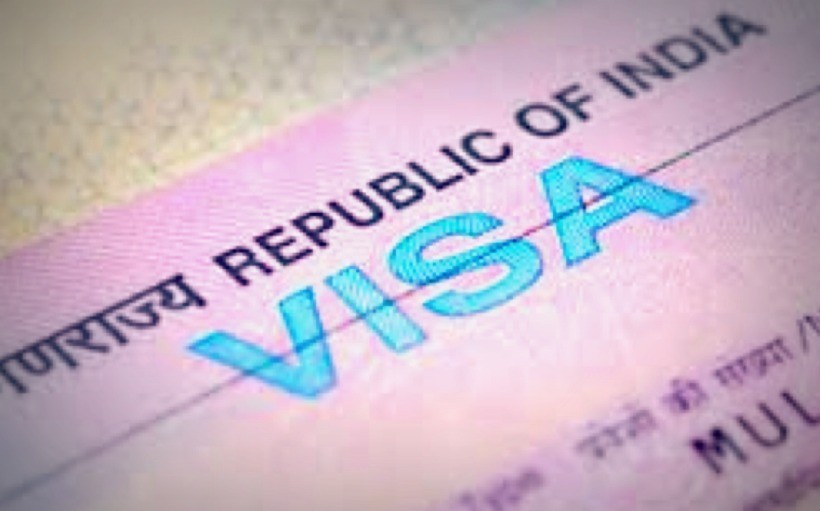As India becomes an increasingly popular destination, it can be difficult to figure out the best way to enter the country as a cruise ship visitor. If you’re planning to visit India as part of your vacation, you’ll likely need an Indian business visa or an INDIAN VISA FOR CRUISE SHIP VISITORS in order to take advantage of all that the country has to offer—from visiting world-class monuments to interacting with locals at fairs and markets along the way. Here are some tips that will help you make sure your Indian visa process goes smoothly from start to finish.
Visiting India as a Tourist
If you’re planning to visit India as a tourist, you may be required to obtain an Indian visa. You’ll need to meet certain requirements, in order to enter India as a visitor. For example, your passport must have at least six months left before its expiration date and must have at least two blank pages available. And, of course, make sure that it will not expire during your trip. A single-entry tourist visa is valid for six months from its issue date and can be extended once inside India; however, you cannot extend your stay by more than six months total in one calendar year.
Who can Visit India as a Tourist?
There are a few types of travelers who can enter India without obtaining a visa beforehand: Airline crews, government officials traveling on duty, and people traveling to India on a ship. This post provides information about Indian visas for cruise ship visitors; people planning a trip to India should be aware of their responsibilities when visiting from abroad by boat.
The Need for an Indian Visa
A majority of cruise passengers to India are on short trips. The Indian government has simplified visa rules and procedures, but it may be difficult to obtain a tourist visa at a consulate while onboard a cruise ship. That’s why we recommend that you apply for an INDIAN BUSINESS VISA in advance. The only drawback is that business visas cannot be extended within India, so you will have to leave the country if your stay is beyond your allotted duration. Read more about extending your Indian business visa here.
What Type of Visa do I need?
After you apply, your passport and visa application are typically sent to a third-party company (the Visa Facilitation Service Provider), where they will be reviewed by an Indian Consulate. If all goes smoothly and your visa is approved, you will get back two copies of your passport with a sticker inside—one copy of which should be kept as proof that you were granted a 90-day stay in India. These steps generally take between 20–30 days. A valid U.S. passport must be presented at check-in when boarding an Indian cruise ship (and during port calls). Your arrival in India may be delayed if your passport is not immediately available or if there are any problems during processing.
Applying for an eVisa from Home
Currently, Indian citizens are able to apply for an eVisa from their home country in advance of their trip. To do so, travelers must fill out an online application and submit a copy of their passport to a company called Travisa (which has partnered with India’s Ministry of Home Affairs). The process takes about five days, which includes an extra 24 hours during which you can cancel your request free of charge—even after you’ve received confirmation that your visa has been approved. Once your eVisa is approved, it will be sent to you as an email attachment that you print out and bring with you on your trip.
What is an India eVisa?
An eVisa to India is a special type of visa that allows citizens of select countries to obtain entry into India electronically. You will receive an email after applying and must print out your approved eVisa and take it with you when you travel. Check out our guide on how to apply, and then read on for more info on how getting an Indian visa as a cruise ship visitor works! If you do not have an eVisa, check out our guide on other visas available to cruise ship visitors in India.
How do I get an eVisa?
In order to get an eVisa, you need to have a valid passport and email address. You will also need to provide contact information for a few people who can act as references; some countries also require that your references be Indian citizens or residents. Once you’ve put together your application, there are a few more steps involved before you get approval (and an electronic visa). A list of these steps is available on India’s official Ministry of External Affairs website. Please note that all applicants must pay a processing fee in order to receive their eVisa. The fee varies depending on which country you’re applying from and how quickly you need it processed; we recommend double-checking fees with your local embassy or consulate prior to making any financial commitments.
What happens after I apply?
After your application is received, you’ll receive a Notification Invoice which includes details of how to pay your visa fee. You can pay either by credit card or through an electronic bank transfer from your home country (online bank transfers are usually free). Once your payment has been processed, you’ll receive an e-mail confirming receipt of your payment and advising you that we have begun working on your case. If you paid using a credit card, there is no need to wait for our e-mail; just look at the details of your transaction on our website and it will clearly state when we received it. We typically process payments within 3 working days but if it takes longer than that, we will contact you with an update.

